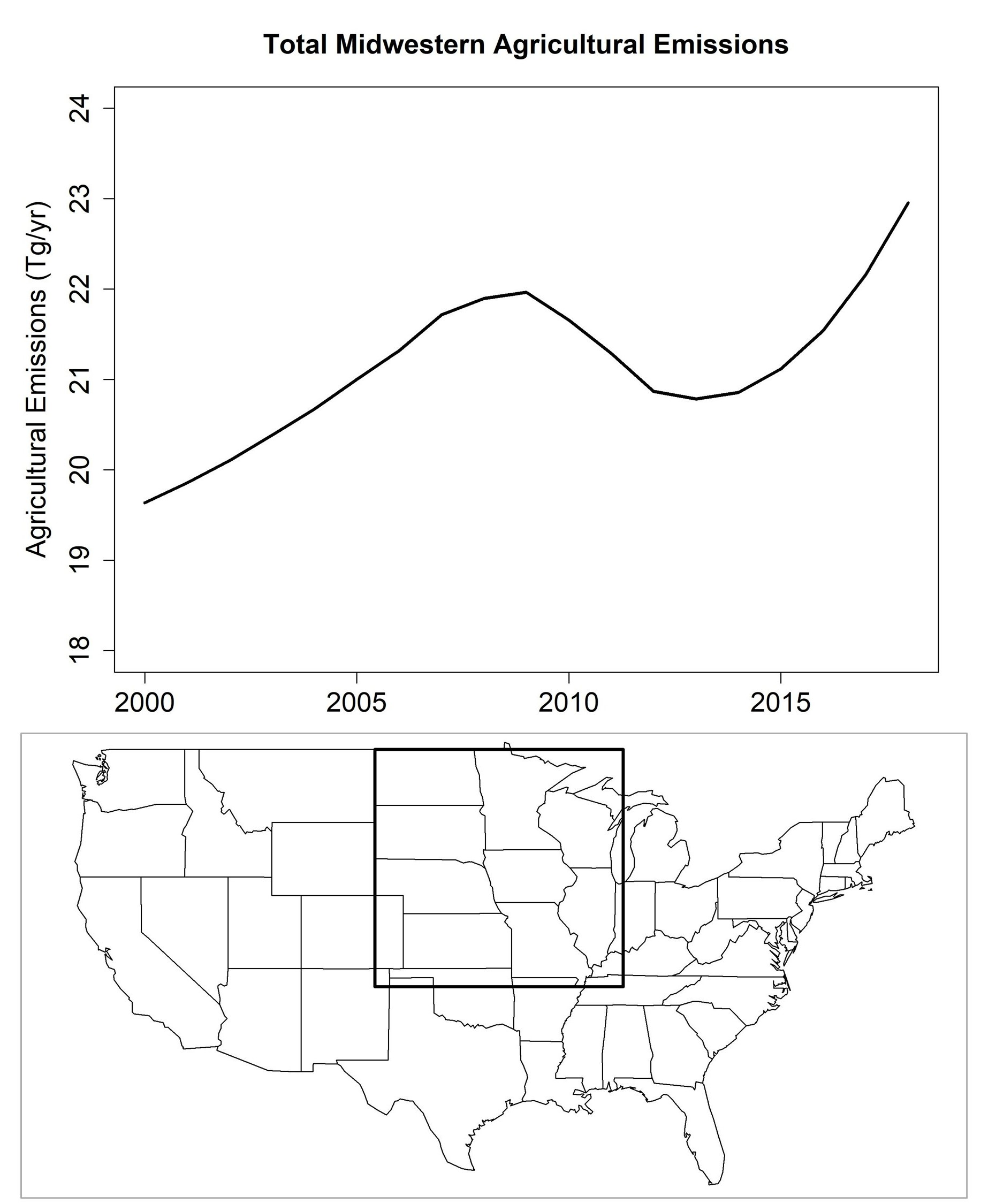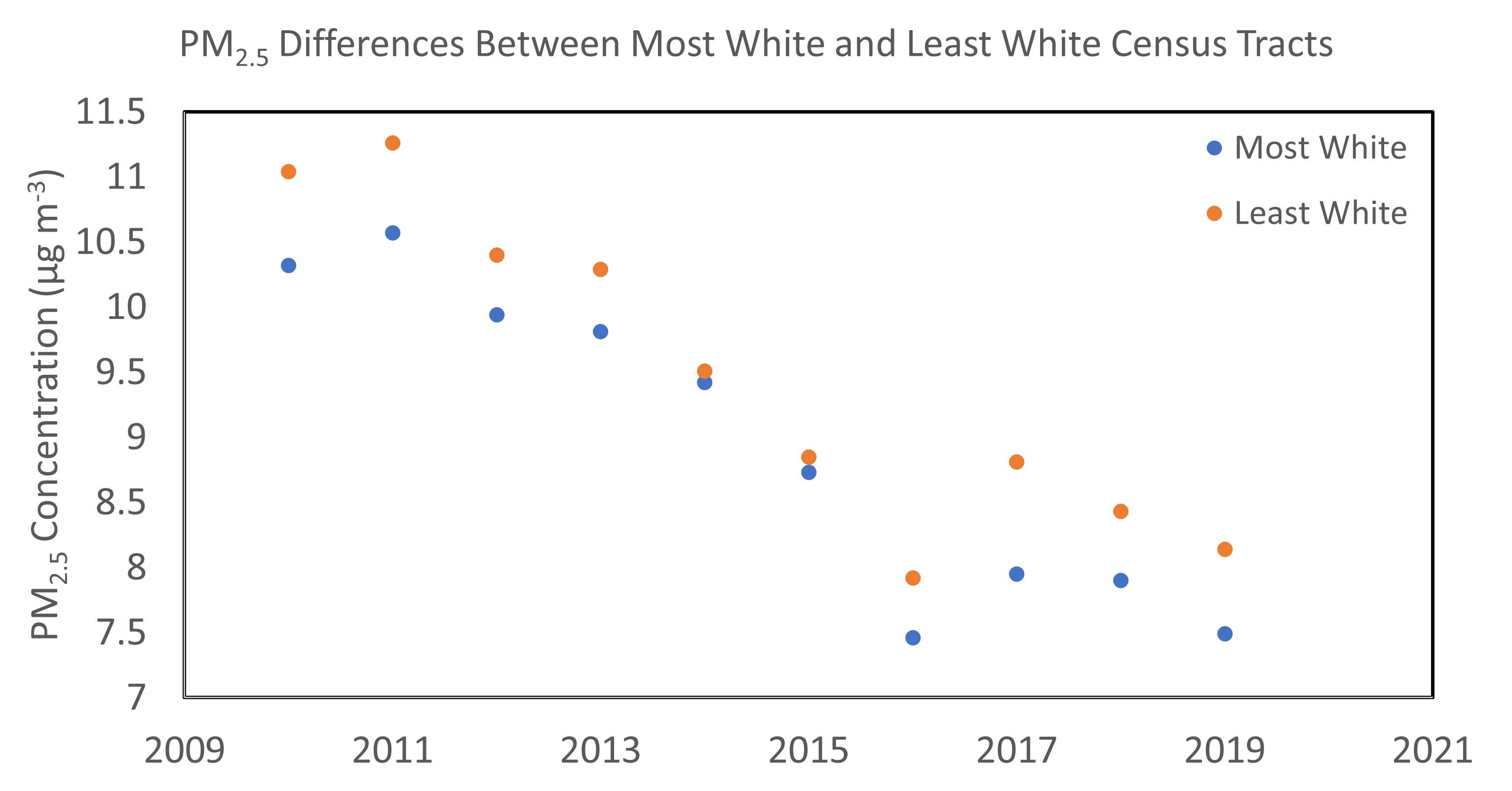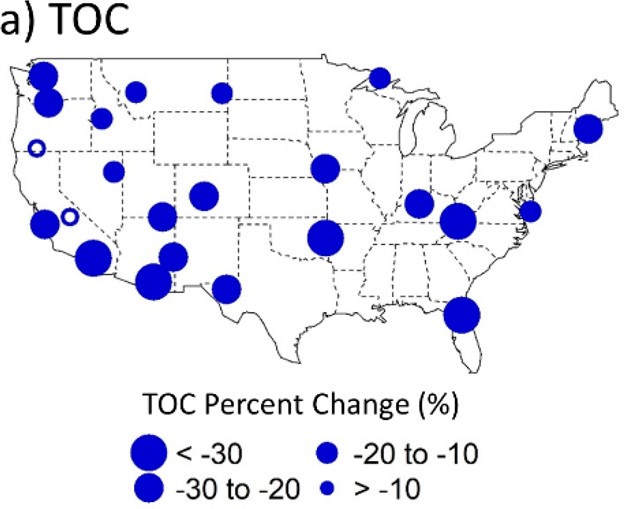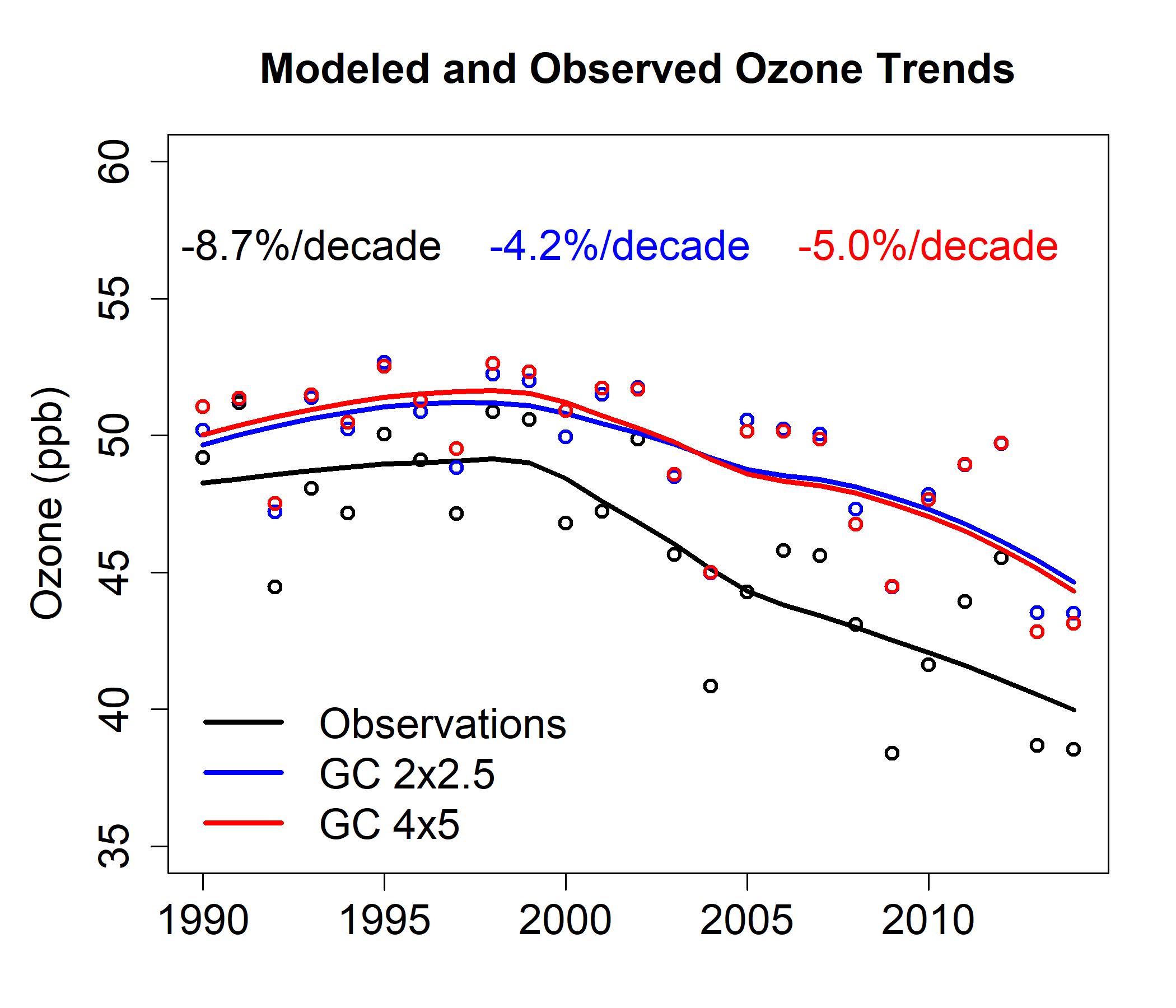Research
Air pollutants such as fine particulate matter (PM2.5) and ozone negatively impact human health, causing millions of deaths worldwide each year. These atmospheric pollutants also impact Earth’s radiation budget and the lifetimes of greenhouse gases such as methane. Environmental regulations have caused decreases in atmospheric pollutants in many regions over recent decades, but many open questions remain, especially regarding the connection between chemistry and climate. Despite decades of study, aerosols and clouds remain the two largest uncertainties in climate models, and the radiative forcing of aerosols and ozone is not well quantified. Further, models struggle to reproduce observed concentrations of some atmospheric pollutants, which limits our ability to reliably predict future air quality, weather, and climate.
Research interests in the Christiansen lab focus on spatiotemporal trends of atmospheric pollutants, their interactions, and the way these pollutants impact Earth’s radiation balance, climate, and air quality. We use long-term measurements, underutilized datasets, and atmospheric models to understand spatiotemporal trends of pollutants, improve model simulations of atmospheric chemistry, and explore the climate and public health implications of these trends. We ask questions that span both gas-phase and multiphase atmospheric chemistry and place an emphasis on the broader impacts of changes in air quality, including radiative forcing, oxidation capacity, and environmental justice.
Agricultural Emissions and Air Quality

Environmental Justice in Kansas City

The Midwestern city of Kansas City, MO, has a long history of redlining practices beginning in the 1920s that have deeply segregated the city. This segregation persists to the present day, making Kansas City an important place to study pollution disparities along demographic lines. We are examining quantitative decadal trends and seasonal patterns in air pollution disparities in the Kansas City Metropolitan Area using Census and model data. In collaboration with the EPA, we are also working to include low-cost measurements of PM2.5 around the metropolitan area to supplement this data and engage the community in air quality issues.
Particle Chemical Composition
 Regulations in the United States have decreased emissions of important gaseous particle precursor species such as sulfur dioxide and nitrogen oxides. As a result, particle mass concentrations have decreased over past decades. However, the organic component of particulate matter is complex and not well constrained. We are investigating factors that influence the organic matrix in particles, including increasing wildfires, temperatures, and urban heat island impacts on particle chemical composition.
Regulations in the United States have decreased emissions of important gaseous particle precursor species such as sulfur dioxide and nitrogen oxides. As a result, particle mass concentrations have decreased over past decades. However, the organic component of particulate matter is complex and not well constrained. We are investigating factors that influence the organic matrix in particles, including increasing wildfires, temperatures, and urban heat island impacts on particle chemical composition.
Ozone

Tropospheric ozone is negatively impacts human health and is a greenhouse gas. It is produced via complex radical chemistry. Despite decades of effort, tropospheric ozone has proven difficult to model accurately over both long and short timescales due to its non-linear chemistry and uncertainties in precursor emissions estimates. We are investigating ways to improve model ozone estimates, including by introducing emissions constraints and through new techniques such as machine learning.
